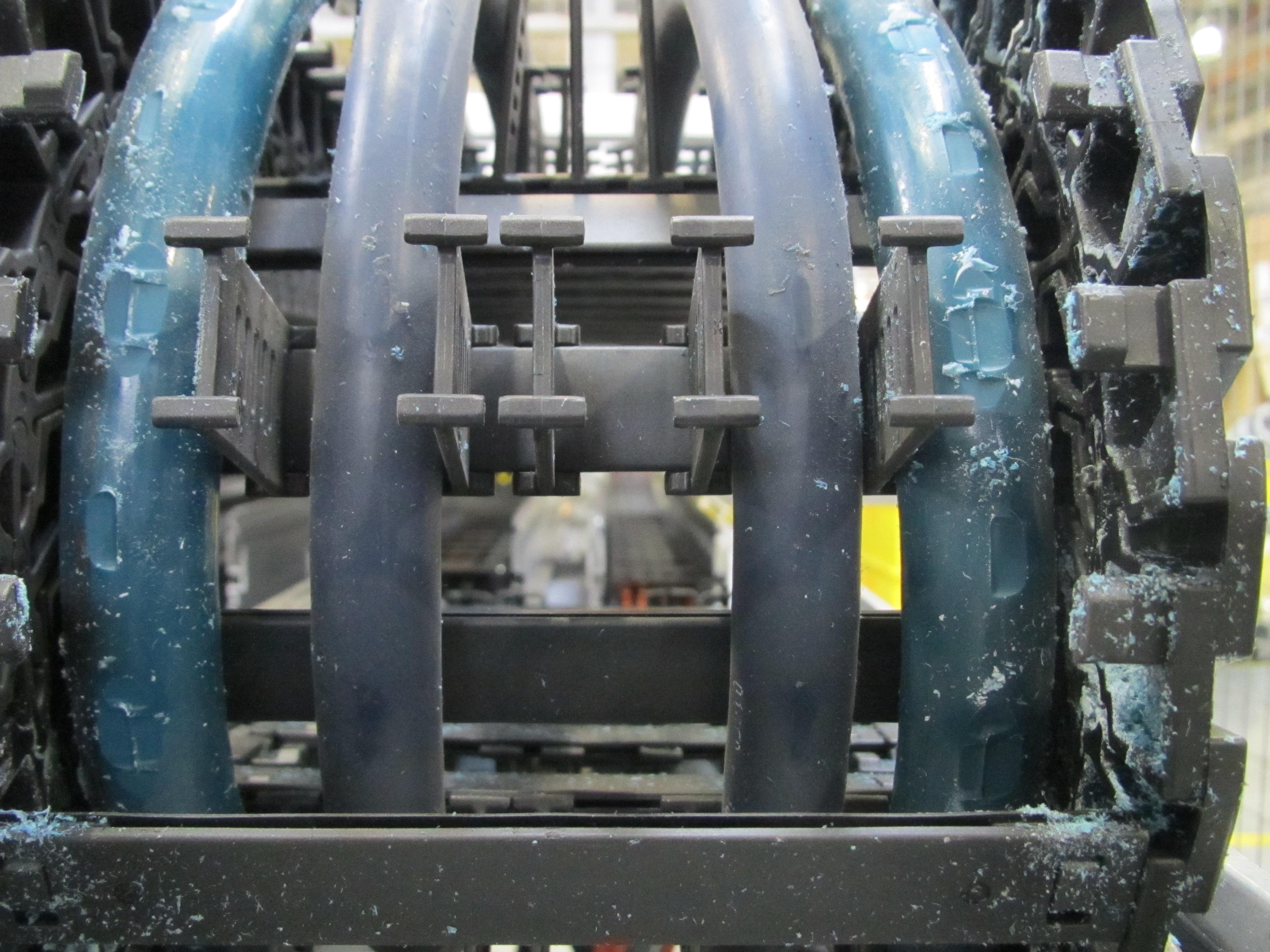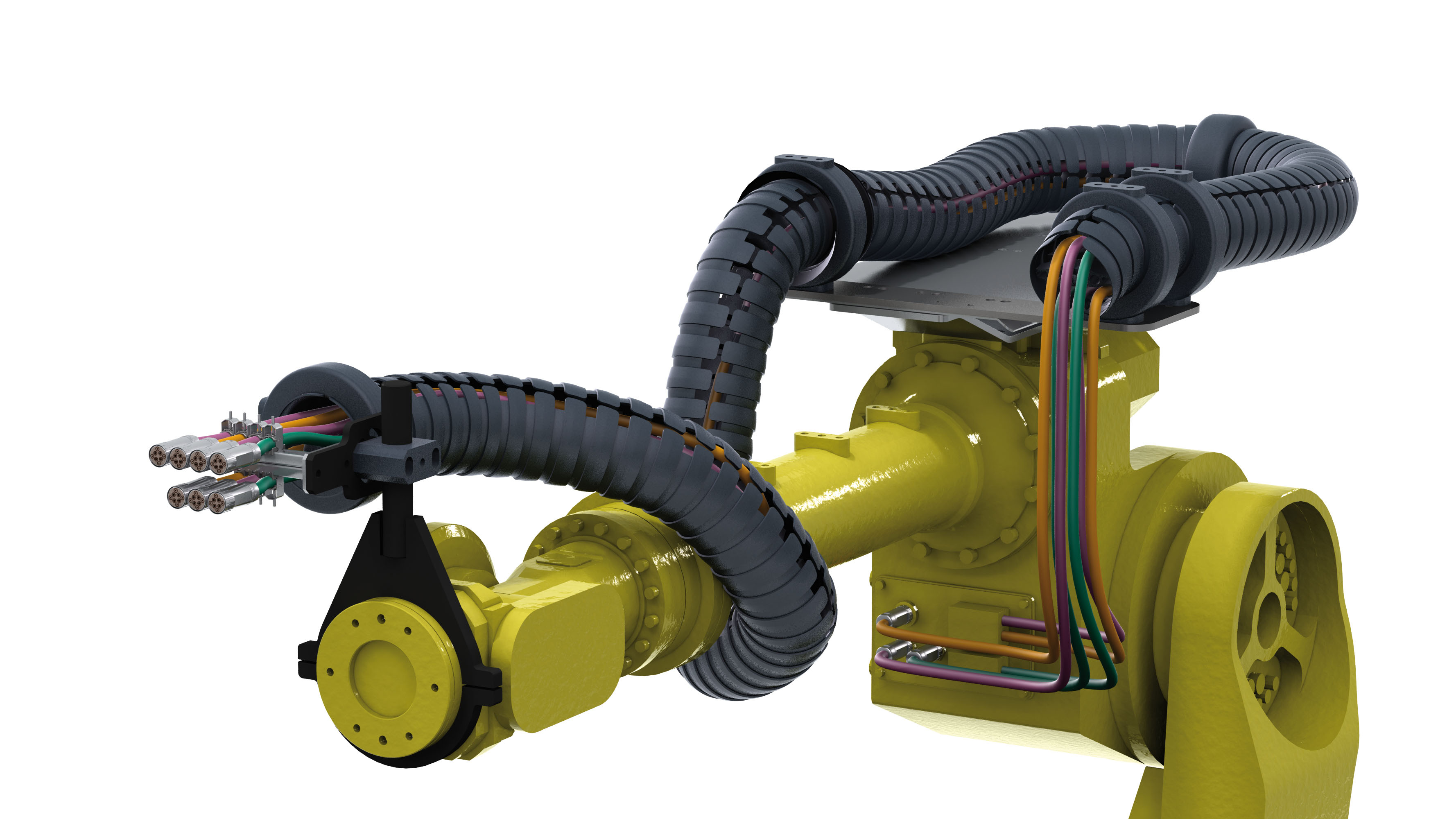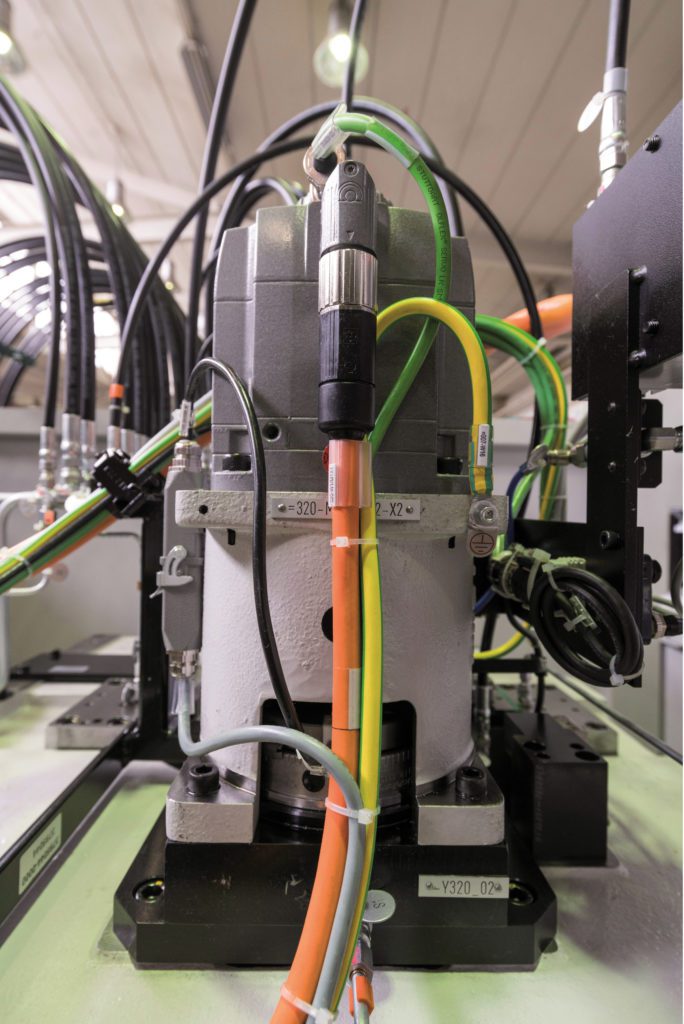By Mary Gannon • More than any other component, cables come in customized versions to satisfy specific application requirements. The number of conductors and strands to transmit power to motors and feedback to and from sensors and controllers are just a couple cable features designers match to designs. More after the jump.

Usually requiring UL listing, cables in motion-control applications must be able to handle tight bending radii, abrasion, flexing and possibly even torsional movements. Some must also isolate the effects of strands conducting power. In VFD cables, for instance, a symmetrical ground design with three grounds and three power conductors offers a small outer diameter and less EMI. However, a four-conductor design with three power conductors and one ground is better for continuous flex applications. The latter are common in machine tools, assembly lines and industrial-production applications.

Jacket material must also be compatible with the application. The cable jacket protects conductors and insulation and may also provide a level of shielding. For example, cables used in harsh environments, such as on mobile machinery and machine tools, require special jacketing to withstand chemicals such as cutting fluids and oils and abrasion. Cables used in these tough environments or in welding applications may also require a flame-retardant jacket or low-smoke, zero-Halogen design.
Cables used in flexing and rotating applications, such as those on robots, must have high tensile strength and abrasion and flammability resistance. These are most often manufactured of polyvinyl chloride (PVC), chlorinated polyethylene (CPE), polyurethane (PUR) and thermoplastic elastomer (TPE).
Cables used in medical applications must be biocompatible
The most common material used in cables for medical equipment is silicone, as it is durable and can be easily sterilized, disinfected and cleaned without disintegrating. Other medical-grade materials include thermoplastic elastomers, thermoplastic polyurethanes and PVC. Still other cables are manufactured with anti-microbial jacket materials to prevent bacterial growth.
Shielding and insulation are also application-specific
Shielding protects the cables from outside electromagnetic interference, but also protects users and machines from voltage spikes and other internal interferences. For cables that will be inside cabinets or machines, or those with light to medium loads, unshielded designs may be used, as they usually are smaller and offer a tighter bend radius. But cables installed on machines that are in motion require shielding, especially when they connect to a motor or drive enclosure.








Leave a Reply
You must be logged in to post a comment.